Yes! that’s right… yet another post about Arepas. By now you know why they are the most Venezuelan dish ever! But these are different than the Arepas I have blogged about before. These are sweet arepas… Sweet? You say… YES! Sweet. They are delicious. These were sort of a treat when I was growing up. My mom only made them once in a while. Of course regular arepas were made… regularly. But these were special arepas! She would make them for dinner and serve them with “Queso Blanco”, the same one I’ve been saying is good with Arepas, and Empanadas, and anything else you can think of. These can be great for breakfast as well, or even as a snack, or pretty much whenever you feel like having one. Like today, I just felt I had to try to make these myself, because I haven’t had them in years.
Now, most of the recipes you see out there for “Arepas Dulces” or “Arepas de Anís” have a very peculiar ingredient that is definitely hard to find. I am talking about “Papelón”. Papelón is also known as “Panela”, which is an unrefined whole cane sugar that comes in a solid block. I didn’t even know what papelón was until I was trying to make these arepas, but since I couldn’t even find it; I called my mom and asked for her recipe, which doesn’t include this mysterious ingredient. So here it is:
What you need:
– 1 Cup Harina PAN
– 1 Cup Water
– 1 ½ Tablespoon Sugar
– ½ Teaspoon Anise Seeds
– ¼ Teaspoon Salt
– Vegetable Oil (Enough for frying)
Preparation:
1. Add the Harina PAN into a bowl, add the anise seeds to the Harina PAN a mix with your hand so that the seeds are spread evenly throughout the mix.
2. Add the water, salt and sugar into a separate bowl, or measuring cup, and stir it, so that the salt and sugar dissolve in the water. The water should taste sweet, but have sort of a salty kick to it. I tried it; I just don’t know how to explain it in correct terms… sorry!
3. Add the water slowly to the mix and start kneading with your hands.
4. Once the dough is ready, let it sit for a minute, while you prepare for the next step. The dough will be ready when it feels sort of like play dough, but it is firm and doesn’t crack.
5. On top of a cutting board, or simply your countertop, lay a large enough sheet of Cling Wrap, and have a bowl, round cookie cutter, or Tupperware of about a 3” diameter, as well as a large flat heavy plate set aside.
6. You are going to grab a handful of the dough, make a ball, set it in the middle of your cling wrap, cover it with the other half of the cling wrap or even grab another sheet of cling wrap if you wish. Then press on it a bit with your hand, and then grab the large flat heavy plate and press on it until you flatten it to about ¼ of an inch thick. Then with the cookie cutter or bowl cut out a 3” diameter circle from the dough. Uncover the cling wrap and remove the circle and set aside (on top of another sheet of cling wrap) to fry them when they are all ready. Remove the excess dough from the cling wrap and put back in your bowl of dough. Continue to make these disks until you have no more dough left.
7. Heat up the frying oil and begin to fry your arepas. Not too many at a time, just as many as fit in your frying pot, deep fryer, or Dutch oven, as you can without them touching each other. But there should be enough oil to cover them completely.
8. As they fry, they will sit at the bottom, but quickly rise to the top. They will also start to bubble, as in they will look like they are puffed up. The skin should be crispy and separate from the dough inside. When one side has done this, and started to brown, flip them.
9. They will be ready when they are brown/golden on both sides.
10. Lay on paper towels to remove the excess oil.
11. Serve hot with Queso Blanco (and a little butter if you wish).
12. To eat them, delicately using a knife, separate the skin on the side which is most puffed-up and stuff with cheese, add butter to the inside dough if you wish.
*Makes about 8 arepas of 3” diameter and ¼ of an inch thick (uncooked).
¡Buen Provecho!

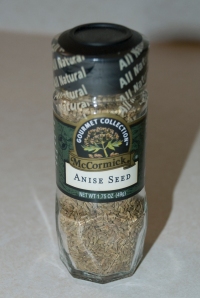
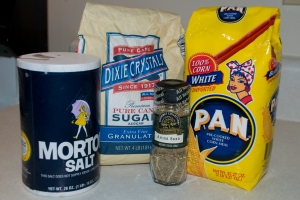
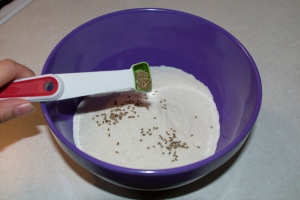
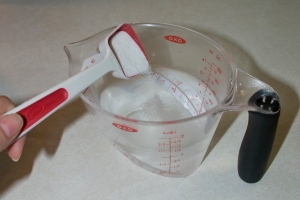
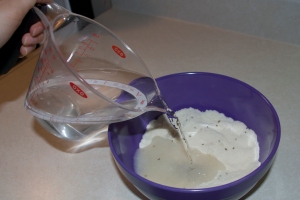
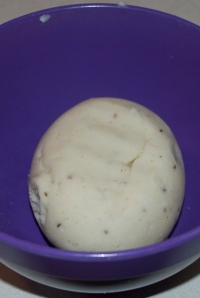
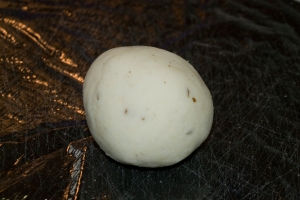
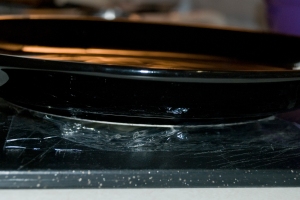
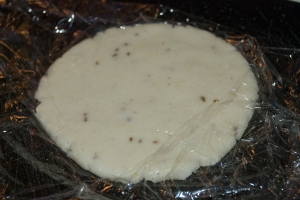
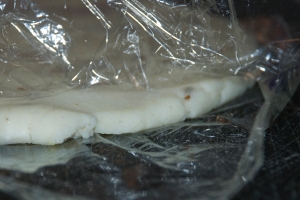
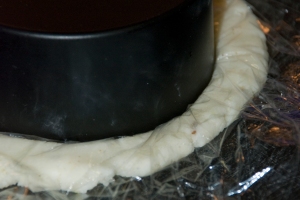
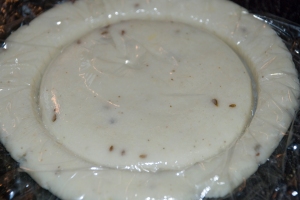
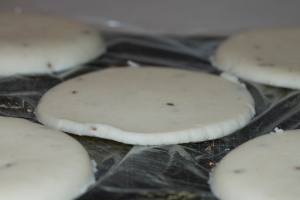
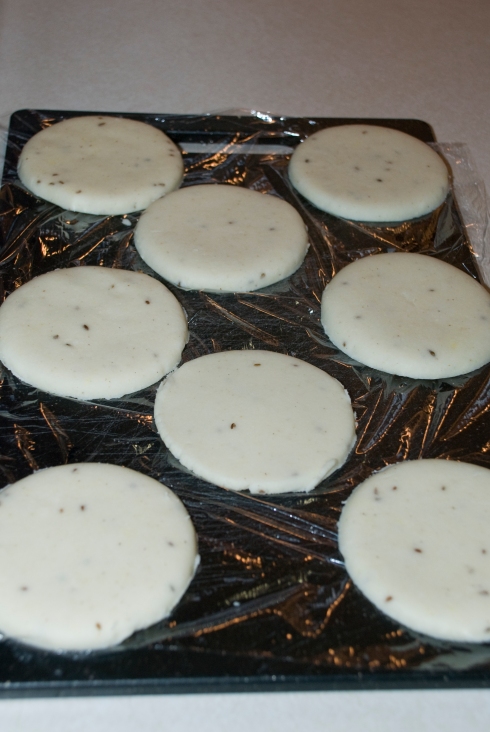
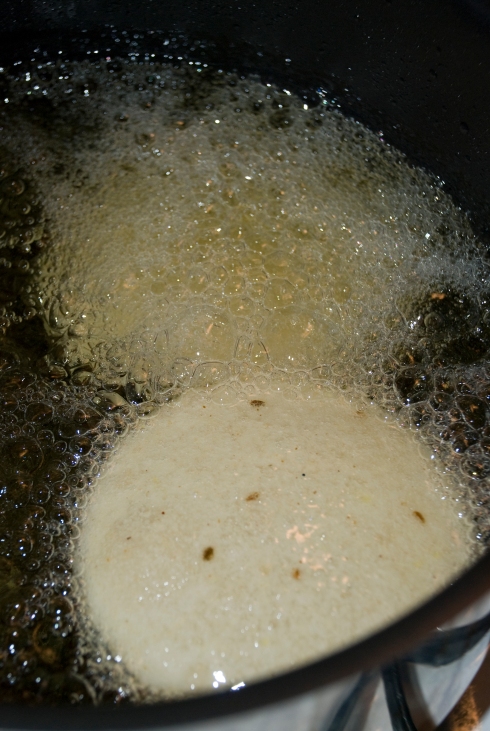
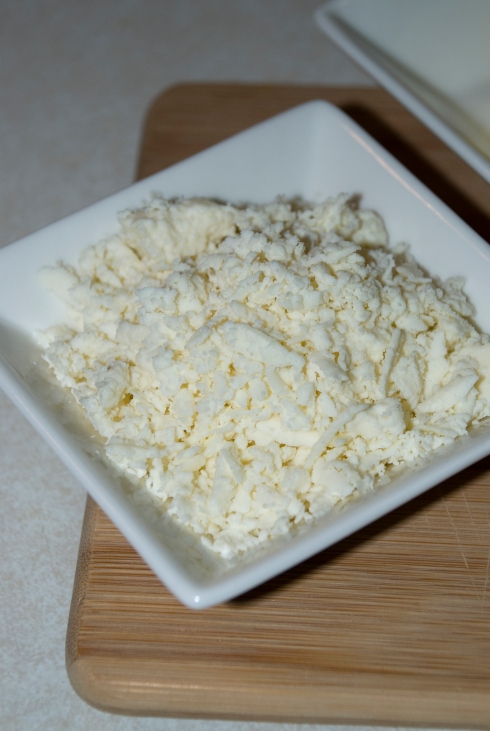
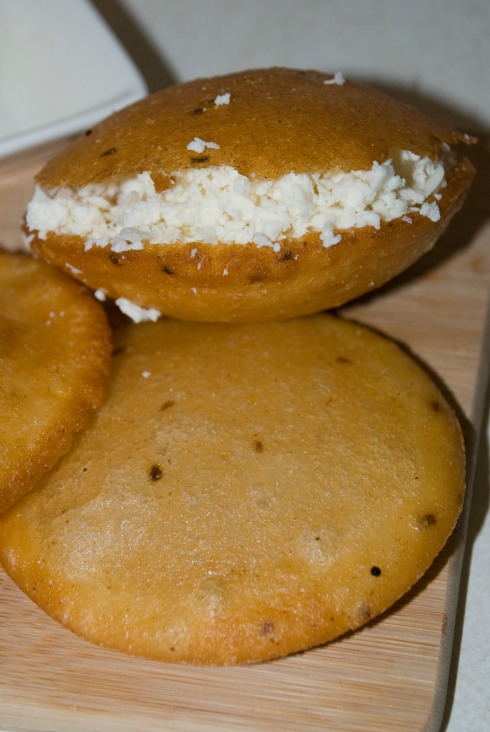
The only arepas I’ve ever had were filled with white cheese. This one intrigues me because anise and fennel are my favorite spices (after salt + pepper).
Joan,
If you’ve never had these Sweet Arepas, you should definitely make some. My husband had never had these, he had been eating regular arepas ever since he met me, and now that he has tried these sweet arepas, he says there is nothing like it and that they are his new favorite!
Thank you so much for this. I’m from Caracas and I was missing “mis arepas dulces” so much! but i had no idea hoe to make them. With this recipe even my Dutch husband is making it without issues. It’s really well explained -in my humble opinion-. Un abrazo!
Zilka,
Thank you for sharing your story. I am glad you liked the recipe and that it was easy for your husband to follow as well.
MW
Love it, it’s the original recipe… 🙂
Ene De Ce Pe-Bell,
Thank you for your comment, I am glad you liked the recipe. Please come back soon.
MW
Does anyone know where to find the queso blanco?? My husband is from Caracas and I would love to make him some arepas dulces, but I can’t find any! I live in New York, but I would be willing to pay for it to be shipped here!
Erica,
Thank you for visiting the blog, and thankyou for your comment/question. I do not know where you can find queso blanco in New York. However, you can probably find local small latin markets or international foods markets where they may have queso blanco. It might not be a Venezuelan brand like “Paisa”, but you can probably find Goya, or any Mexican brands. If you do find some, please report back to us and let us know where.
MW
I am form Caracas,
They were the best arepas;
Served just out the fryer and placed on a brown paper wraper topped with
cut fresh ” Queso de Mano “, the onlything I can tell you at the age of 16.
this was my Food favorite.
dvd.
Hello David,
Thank you for visiting the blog and thank you for your comment. I was raised in Caracas myself. I agree las arepitas dulces are the best arepas, they were my favorite too, but I only ate them at home when my mom cooked them. Where did you used to eat them?
MW
Hi! Friends are from the west side of Venezuela and not too familiar with this recipe. Must be a more Caraqueño thing.
My question for you is how do you exchange panela for sugar in this recipe? We have panela galore – access to Mexican and Colombian types. It’s hard and solid and I’m not sure how to break it down for this recipe. I’m guessing maybe boil it down and then let water cool?
Thanks!
Seria bueno que tambien lo pusieran en español
Hola Teresa,
Gracias por visitar la página, y por tu comentario. Si, en efecto tengo planeado poner todas las recetas disponibles en inglés y en español, pero es un proyecto que me tomará un poco de tiempo completar. Por los momentos los lectores que no sepan español pueden usar el mismo traductor automático de su navegador de internet. Si usa Google Chrome y en sus ajustes tiene el sistema en español, automáticamente ofrecerá traducir al español todas las páginas que esté viendo en inglés.
Gracias,
MW
PD: Para traducir la página entera y ver todas las recetas traducidas automáticamente por google translate, puede ver el siguiente enlace:
https://translate.google.com/translate?hl=es&sl=en&u=https://venezuelancooking.wordpress.com/&prev=search&pto=aue